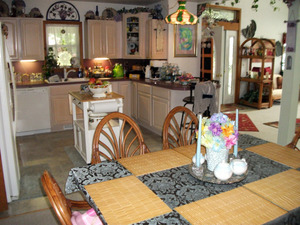The Amish Settlers
The Amish have made Lancaster, Pennsylvania, and the surrounding area their home since immigration began in early 1727, and as word spread about the lush farm land, and William Penn’s offer of religious freedom came into being, the Amish immigration continued at a rapid pace through 1770. The Amish quickly settled into farming because this rural lifestyle made it easier for them to keep their distance from religious non-believers. As their numbers grew, Amish settlements were established in many other states, as well as in Canada. These plain dressed earthy people have no intentions of changing their life style as they have a strong belief system that they should be a group that is set apart from the rest of the world. This could be exactly why visitors have always been drawn to Lancaster County and the scenic Pennsylvania Dutch Country. Here you’ll discover neat and clean Amish farms and communities where life moves at a much slower pace. You’ll find beautiful scenery dotted with one-room schoolhouses and beautiful wooden covered bridges. Visitors get a kick from seeing the modern farm machinery being pulled behind four to six mule teams, and homemade clothing and quilts can be seen gently blowing in the summer breeze, and there isn’t a day that goes by that you can’t hear the clip-clop of horse hooves echoing down one of the picturesque country roads.
Amish Settlements and Religion
The Amish have expanded their settlements, as there is an estimated 150,000 Amish in the country now, mainly due to the large families which average about seven kids. There are as many as eight different orders here in the U.S. Such as Old Order Amish, New Order Amish, Andy Weaver Amish, Beachy Amish, and Swartzentruber Amish. Each of the order’s practice their own style of religion and conduct in daily life. The Old Order Amish are the largest group. All aspects of Amish life are dictated by a list of rules, oral rules they are known as Ordnung is basically the outline and the basics of the Amish faith and help to define what it means to be Amish. Ordering differs from community to community.
Amish Clothing
The Amish consider style and fashion to be vain. They feel that flashy garments are meant to get one noticed, and that is not something that they desire. Amish women and girls wear solid-colored dresses with a full skirt that is knee to floor length. Blues and purples are the most common colors for these women. They also wear black stockings and shoes. Amish men wear dark-colored suits without lapels, trousers with no pleats, solid-colored shirts, suspenders, black socks and shoes and a black or straw-brimmed hat.
Amish Transportation
The Amish refuse to drive modern vehicles as they feel that their horse and buggy promotes equality and limits travel, keeping communities together. The typical buggy seats four people as there are two bench seats built into the structure of the buggy. It is by no means a comfortable ride, but the Amish do not look for modern day comforts. It is simply transportation to get their goods to the local markets for income to survive. The buggies most often seen are black in color, but in Lancaster County the Old Order Amish drive gray buggies and the Old Order Mennonites drive black buggies. It is typical of the Amish to display a bright orange triangle onto the back of their buggy’s for safety reasons. These dark vehicles cannot be seen clearly after dark as they have no lights, and the reflector can be easily spotted from passing vehicles.
The Amish Income
The Amish of Lancaster County, Pennsylvania are generally acclaimed as some of the premier quilter’s in the world. Their natural ability at fine craftsmanship, and their ability to put together attractive color combinations have earned them this outstanding reputation. Quilts can be quite expensive, but the Amish keep their prices affordable to the public. They are also masters at making bakery products that taste like no other. The Amish also survive financially by contributing to a community pot, and it is the duty of all to lend assistance to those in need. They are probably best known for their fresh produce, milk, and farming skills. The main crops grown by the Amish in Lancaster County are corn, hay, wheat, tobacco, soybeans, barley, and potatoes. Farmers also grow various grasses for grazing, and their corn, grain, and hay crops remain on the farm for feeding livestock. Farming is done with horsedrawn equipment with metal wheels. Furniture and goods can be purchased at roadside locations, fairs, and small rented vegetable markets. This is how the Amish thrive in everyday living. The men are known as some of the finest furniture makers in the world, and not only can you find this unique furniture in an Amish home, but they sell it to the public. It is affordable, and will last for decades due to its durability.
Amish Weddings
When they marry, it is for life as seperation and divorce are not permitted. Their weddings take place after the fall harvest. November is the favored month because the winter weather has not yet begun. At the tender age of sixteen, courtship begins, but couples will likely be twenty or older when they finally exchange vows. The couple planning to marry must be church members, and blue is the favored color for a wedding dress. The newly married couple has a honeymoon that consists of weekend overnight visits to various relatives, during which new acquaintances are made and wedding gifts are presented. The newlyweds live with the woman’s parents until the spring, when they will establish a place of their own. A young couple is not expected to be able to buy a farm. It will be purchased for them with assistance from family and community.
The Amish Home
The Amish home consists of primitive furniture that is functional and styled with simplicity in mind. Some of the appliances, such as a stove, may be a little newer, but there is no electricity to operate modern appliances. All lighting is by candle or oil and gas lamp. The Amish home and social life has remained virtually the same throughout time, but modern technology has become acceptable so long as it is for business or practical reasons, but never for inndulgence, desire or entertainment. Listening to music or news on a stereo while doing chores would be considered a needless distraction. Any technology that is seen as degrading family or spiritual life is rejected entirely. Television brings questionable values to the home, so it is not even a consideration in the Amish home.
Amish Cooking
The Amish women are far from lazy, as cooking and baking usually starts in the early morning hours each day. They prepare their food by the light of a propane lantern or oil lamp, and their traditional windmill is augmented by a small gasoline engine that pumps water into their home from a nearby well. When preparing food for the public the water is tested regularly for purity to conform to state regulations for commercial bakeries. The Amish do not use electricity, so all of their baking is done from ovens fueled by natural gas.
Amish Recipes
Pork Scrapple
2 pounds lean boneless pork
2 quarts boiling salted water
1 1/8 cups cornmeal
2 cups cold water
1/4 teaspoon pepper
1/4 teaspoon savory
1/4 teaspoon sage
salt to taste
Instructions:
Simmer meat in salted water until very tender approximately 2 hours.
With a fork, shred cooked pork into fine pieces. Bring 1 quart of stock to boiling.
Mix together cornmeal and cold water, stir into boiling stock. Cook, stirring until thick. Add pepper and other seasonings.
Stir meat into stock and cook 5 mintues longer. Pour into butter loaf pans.
Refridgerate, once chilled, slice and fry until crispy.
Tomato Relish
18 ripe firm tomatoes
1 stalk celery
4 medium size onions
2 sweet green peppers
2 sweet red peppers
1/3 cup salt
2 1/4 cups granulated sugar
1/2 teaspoon ground cloves
2 teaspoons cinnamon
1/2 teaspoon black pepper
2 tablespoons mustard seed – in cheesecloth bag
1 1/2 cups applecider vinegar
Instructions:
Peel tomatoes, then chop into small pieces.
Chop celery, onions and peppers finely. Mix together the vegetables and salt.
Place in refrigerator overnight. Drain thoroughly in the morning.
Combine sugar, spices and vinegar, making sure the sugar is dissolved, in a large saucepan.
Bring to a boil and simmer 3 minutes. Add vegetables and return to boil. Simmer for 10 more minutes, stirring occasionally.
Remove cheesecloth bag.
Spoon into hot sterilized jars and seal
Funnel Cakes -(Drechter Kuche)
3 eggs
2 cups milk
1/4 cup sugar
3 cups flour – up to 4
1/2 teaspoon salt
2 teaspoons baking powder
Instructions:
Beat eggs and add sugar and milk.
Sift half the flour salt and baking powder together and add to milk and egg mixture.
Beat the batter smooth and add only as much more flour as needed. Batter should be thin enough to run thru a funnel.
Drop from funnel into deep, hot fat (375 F) Sprials and endless intricate shapes can be made by swirling and criss crossing while controlling the funnel spout with a finger.
Serve hot with molasses, tart, jelly, jam or a sprinkle of powdered sugar.
Notes:
This recipe makes several funnel cakes make only about 1 1/2 inches thick when funneling into oil. When finished drain on paper towel, then add toppings as desired.


